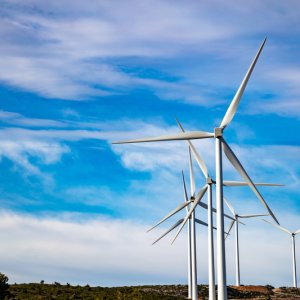
Is Mexico’s Renewable Energy Investment Pool Running Dry?
 By María José Goytia | Journalist and Industry Analyst -
Wed, 02/02/2022 - 10:25
By María José Goytia | Journalist and Industry Analyst -
Wed, 02/02/2022 - 10:25
Mexican energy associations have warned that if President Andrés Manuel López Obrador's electric reform is approved by Congress under its current terms, it will drastically slow down potential foreign investment in green energy generation. Even if the president’s proposal does not manage to place the state in charge of the energy sector, uncertainty is already halting the flow of investment.
“With or without the reform, it is already damaging investment. Above all, it is affecting the pace of investment, because regulatory uncertainty has put the brakes on new projects and has hurt confidence for new investors to come to Mexico,” said Nelson Delgado, spokesman for the Mexican Wind Energy Association (AMDEE) and the Mexican Solar Energy Association (ASOLMEX)to Bloomberg earlier this week.
“If wind and solar energy is displaced by inefficient thermo-electric plants from the CFE it will impact on costs and emissions,” said Delgado, putting at risk Mexico’s fulfillment of its Paris Agreement commitments. The government’s efforts to undo 2014’s market liberalization is pushing back potential private investment, making this goal difficult to achieve, as it is precisely these private efforts that generate 99 percent of wind and solar energy in Mexico. AMDEE and ASOLMEX are not alone in their assertions. Last week, JP Morgan published similar findings, as did Bloomberg’s own National Renewable Energy Laboratory (NREL), with the latter asserting the reform would drive up costs associated with generating electricity as well. Many private sector participants and independent analysts join them voicing similar opinions.
On a side note, in order for the country to meet its clean energy goals by 2024 of 35 percent clean power production, in addition to the US$20 billion already invested in Mexico’s wind and solar sector, a further investment of US$10 billion is required by 2024.
However, Mexico’s government has a contrasting view. Guillermo Nevárez, head of CFE’s Distribution said that the Energy Regulatory Commission (CRE) has granted permits worth a 100,000MW since the enactment of the 2014 Energy Reform, though forecasted demand stands at 50,000MW by 2024. “This excess supply saturates the network, requiring additional transmission capacity and reinforcement of lines,” he said. In addition, all of this investment would fall on the grid owner, Mexico’s state utility CFE. Meanwhile, the CFE would need to retire its dirtier capacity, making it all but impossible for the state company to compete with large private enterprises. The current situation has become unacceptable for the federal government and is focusing its efforts in rescuing the CFE. Minister of Energy, Rocío Nahle, has firmly stated that Mexico is well on track to reach its clean energy goals. She furthermore argues CFE is not a producer of dirty energy, despite its reliance on PEMEX’s fuel oil and the cleaner-burning natural gas. Boosted by its hydroelectric capacity and new solar energy projects, the state itself says it can bridge the clean energy gap.
Despite this ideological battle at the heart of the electric bill, investment indeed appears to be drying up. Investment in new renewable energy projects in Mexico has fallen almost 80 percent compared to a 2017 peak of US$6.2 billion, totaling just US$1.3 billion in 2021. Last year's investment was also 46 percent lower than 2020, according to data compiled by Bloomberg, which shows the decreasing trend of investment in the sector during President López Obrador’s term. Despite these grim figures, Mexico’s government appears to increasingly bet on renewable energy, with the flagship Puerto Peñasco project and a major hydroelectricity overhaul leading the way. Today, the CFE is furthermore venturing into rooftop solar and green hydrogen, as well as examining small nuclear capacity and expanding its natural gas networks. At the same time, C&I companies continue to invest in renewables in order to lower electricity costs and boost sustainability goals. Still, this investment dwarfs the billions of private capitals that once flowed into the country.
The only way to bring back investment is to create certainty, experts say. “Any investor needs confidence to invest, whether in our country or anywhere else in the world. The market needs a credible and consistent discourse from the government regarding national economic growth and development,” wrote Roberto Ballinez, Executive Finance and Infrastructure Director, HR Ratings for MBN.
Concerns about a drastic reduction of private investment in the energy sector come in times of economic deacceleration and less favorable growth projections for Mexico. Last week, the International Monetary Fund (IMF) lowered its economic growth projection for Latin America and the Caribbean for 2022, with sharp cuts for Brazil and Mexico. As it updated its World Economic Outlook, the IMF reduced 1.2 percentage points Mexico’s GDP growth, leaving it at an expected 2.8 percent for this year.
















